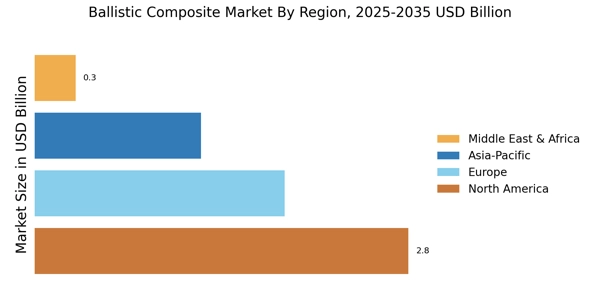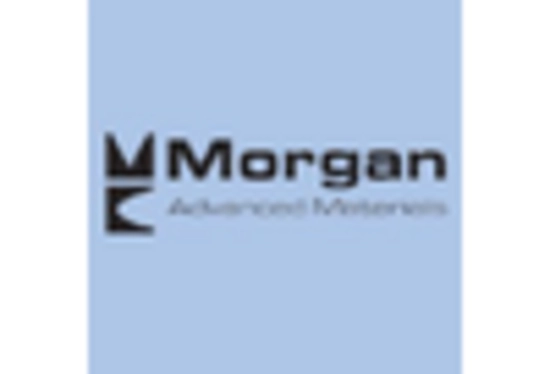Rising Defense Expenditures
The Ballistic Composite Market is experiencing a notable surge due to increasing defense expenditures across various nations. Governments are allocating substantial budgets to enhance military capabilities, which includes the procurement of advanced ballistic protection materials. For instance, defense budgets in regions such as North America and Europe have seen a consistent rise, with projections indicating a compound annual growth rate of approximately 3-5% over the next few years. This trend is likely to drive demand for ballistic composites, as military applications require materials that offer superior protection against ballistic threats. Consequently, manufacturers in the Ballistic Composite Market are focusing on developing innovative solutions to meet the evolving needs of defense forces, thereby positioning themselves for growth in this lucrative sector.
Technological Innovations in Manufacturing
Technological advancements in manufacturing processes are significantly influencing the Ballistic Composite Market. Innovations such as 3D printing and advanced weaving techniques are enabling the production of lighter and stronger ballistic materials. These technologies not only enhance the performance characteristics of composites but also reduce production costs, making them more accessible to various sectors. The integration of smart materials, which can adapt to different conditions, is also gaining traction. As a result, the Ballistic Composite Market is witnessing a shift towards more sophisticated products that cater to both military and civilian applications. The potential for these innovations to improve the efficacy of ballistic protection systems is substantial, suggesting a promising future for manufacturers who embrace these advancements.
Growing Threat of Terrorism and Civil Unrest
The increasing threat of terrorism and civil unrest is a critical driver for the Ballistic Composite Market. As security concerns escalate, there is a heightened demand for protective gear and materials that can withstand ballistic attacks. Law enforcement agencies and private security firms are investing in advanced ballistic solutions to ensure the safety of personnel and civilians. Reports indicate that the market for personal protective equipment, which heavily relies on ballistic composites, is expected to grow at a rate of 6-8% annually. This trend underscores the necessity for robust ballistic materials in both military and civilian contexts, thereby propelling the growth of the Ballistic Composite Market.
Expansion of Aerospace and Automotive Sectors
The expansion of the aerospace and automotive sectors is contributing to the growth of the Ballistic Composite Market. As manufacturers seek to enhance the safety and performance of vehicles and aircraft, the demand for lightweight and durable materials is increasing. Ballistic composites are being integrated into the design of armored vehicles and aircraft to provide enhanced protection without compromising performance. The aerospace sector, in particular, is projected to witness a growth rate of around 4-6% in the coming years, driven by the need for advanced materials that can withstand extreme conditions. This trend is likely to create new opportunities for suppliers in the Ballistic Composite Market, as they cater to the evolving needs of these industries.
Regulatory Standards and Compliance Requirements
Regulatory standards and compliance requirements are shaping the Ballistic Composite Market. Governments and international organizations are establishing stringent guidelines for ballistic protection materials, particularly in defense and law enforcement applications. Compliance with these standards is essential for manufacturers aiming to enter or expand within the market. The increasing focus on safety and performance metrics is driving innovation in the development of ballistic composites that meet or exceed these regulations. As a result, companies that prioritize compliance are likely to gain a competitive edge in the Ballistic Composite Market, positioning themselves as leaders in quality and reliability.


















Leave a Comment